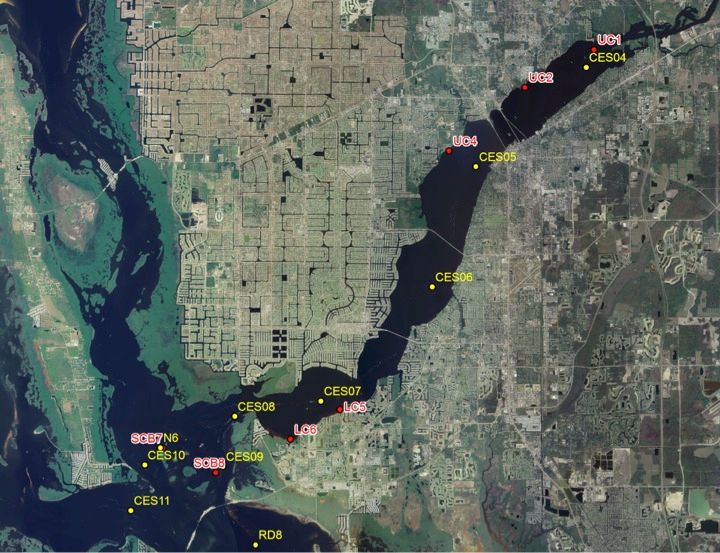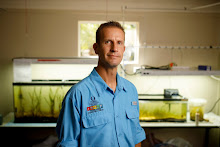Since 2013 I've been working under a contract with the South Florida Water Management District (SFWMD) to monitor Submersed Aquatic Vegetation (SAV) in the Caloosahatchee Estuary. "SAV" includes seagrasses, which live in saltwater, but it also includes freshwater plants that resemble seagrasses. There are two main reasons to monitor SAV:
1. SAV provides valuable "ecosystem services" such as creating food and habitat for animals (and fishing opportunities for humans), improving water clarity, removing excessive nutrients and carbon dioxide, and reducing erosion.
2. SAV is extremely sensitive to water quality, so changes in the amount of SAV can indicate pollution or other problems in the water environment that need to be addressed.
The Caloosahatchee Estuary has historically supported healthy beds of SAV both in the saltwater part where it joins the Gulf of Mexico and in the fresher part around the city of Fort Myers and upriver. Different species of SAV are typically found in the different parts of the estuary; seagrasses near the Gulf of Mexico, and freshwater "tapegrass" in the more inland part of the estuary. Man-made changes in pollution and salinity levels may affect SAV differently in the different parts of the estuary, so we monitor SAV at seven different spots along the length of the estuary.
The red writing on this map shows the seven sites where we monitor the abundance and health of SAV. The yellow writing shows where water quality (salinity, temperature, pollution, etc.) is measured. Collecting all this data allows us to relate changes in SAV to changes in water quality.

SAV has declined recently in some parts of the Caloosahatchee Estuary, with the worst declines being in the fresh and brackish parts where there's virtually no tapegrass anymore. Unstable salinity levels and murky, polluted water, which are both related to human activities in the land areas that drain into the estuary, are largely to blame.
Keeping track of SAV health over such a large area is a big job, especially with the rigorous monitoring and bookkeeping methods required to meet the high standards of the SFWMD. For example, at each of the seven monitoring sites we survey, we assess seagrass characteristics at 30 random points sprinkled over an area the size of a football field. Each point has its own designated Latitude and Longitude coordinates, and we use waterproof GPS units to find the points. This year we are also entering data directly into specialized "Trimble" GPS units, which seemed like a lot of trouble at first but is OK now that I've reallocated some money from the SFWMD to hire extra helpers. With me plus a paid research technician, plus two paid graduate students, plus a small army of unpaid undergraduate interns, we now have this fieldwork on LOCK. We got our May SAV (Submersed Aquatic Vegetation) monitoring for the SFWMD done with speed and style, and even had the time to take pictures while were out there (See slideshow below).
The SAV in the lower Caloosahatchee Estuary looked thick and healthy in May relative to its sparse abundance earlier in the year. However, the epiphytic algae growing on it was quite thick in places- possibly indicating excessive nutrient inputs from humans or a deficiency of algae-eating animals. In the upper Caloosahatchee Estuary the submerged aquatic vegetation remained very sparse.

No comments:
Post a Comment